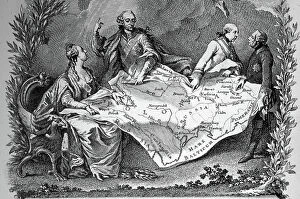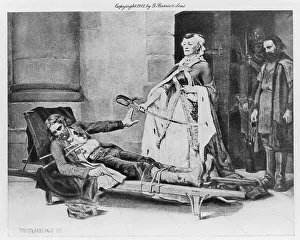Polish Lithuanian Commonwealth Collection
"The Polish-Lithuanian Commonwealth: A Tapestry of History and Struggle" Step into the rich tapestry of the Polish-Lithuanian Commonwealth
All Professionally Made to Order for Quick Shipping
"The Polish-Lithuanian Commonwealth: A Tapestry of History and Struggle" Step into the rich tapestry of the Polish-Lithuanian Commonwealth, a remarkable union that spanned centuries and left an indelible mark on European history. From its creation in 1569 through to its eventual demise in 1795, this diverse and complex state witnessed triumphs, conflicts, and moments of profound significance. In the heart-stirring painting by Poilleux-Saint-Ange, we witness Tadeusz Kosciuszko's refusal to accept Catherine II's sword in 1783. This act symbolizes his unwavering commitment to freedom and independence for his beloved homeland. The January Uprising of 1863 saw Polish peasant insurgents rise against their oppressors. Their courageous struggle for national identity is immortalized in our collective memory as a testament to the unyielding spirit of the common people. The Union of Lublin holds a pivotal place in history as it solidified the bond between Poland and Lithuania. The engraving from 1569 captures this momentous occasion when two nations joined forces under one banner, forging a powerful alliance that would shape Eastern Europe for centuries to come. Nobleman Adam Kazanowski stands tall in an exquisite engraving, representing not only his own stature but also the influential role played by Polish-Lithuanian nobility within this unique political entity. Anna Jagiellon's portrait transports us back to her reign as queen of Poland during the late sixteenth century. Her strong leadership brought stability amidst turbulent times while leaving an enduring legacy as one of Poland's most revered monarchs. However, not all chapters were marked by prosperity; with each partition came further fragmentation. The Third Partition of Poland in 1795 dealt a devastating blow to the once-mighty Commonwealth, reducing it to mere remnants under foreign domination.
















